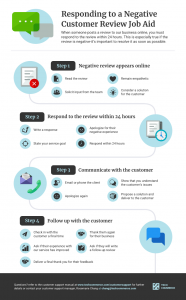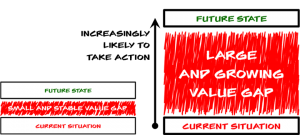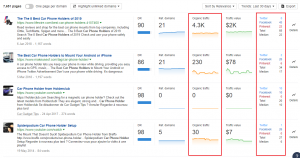
Employee recognition is one of the most powerful employee engagement and retention tools you have at your disposal. It’s your key to leveling the playing field.
Salary isn’t the only effective means of attracting, inspiring, and retaining star employees. It’s important, but its weakness is that it’s fungible.
Your salary dollars are directly replaceable with your competitors’ salary dollars. With all other elements of the employee value proposition being equal, your competitor will have a more compelling offer if they’re offering more salary.
That’s why it’s crucial to consider the non-fungible elements of your employee value proposition — the things you can provide to employees that are unique, and have no identical replacements.
One of the least fungible assets a company has is its culture. Building an extraordinary culture of recognition and appreciation can level the playing field between companies large and small, high tech and low tech, startups and global institutions.
In a study of 834 organizations, Bersin and Associates found that “Companies that scored in the top 20% for building a “recognition-rich culture” actually had 31% lower voluntary turnover rates.”
It may be hard to believe, but that single factor really was responsible for such a dramatic reduction in turnover — and a dramatic reduction in turnover can mean the difference between a good year, and a great year.
So how do you build a recognition-rich culture of appreciation?
There are some great resources dedicated to this topic, but to get you started, here are some traits that every great employee recognition program exhibits.
Free Bonus: Find out the single biggest mistake managers make when it comes to employee recognition.
Implementing them can help ensure you’re seeing the best results possible:
Frequency
For recognition to be its most effective, it must be frequent. It’s not enough to recognize contributions on a yearly, monthly, or even weekly basis.
There are countless ways each member of your team is bringing you closer to your goals each day.
Recognizing the multitude of efforts, and showing your appreciation for them is the foundation of a strong organizational culture.
Sometimes small wins can go by unnoticed and unrecognized, which leaves little incentive for employees to work towards achieving them.
Frequent recognition provides a constant reassurance that each team member’s work is valued, whether it’s a small win, or a major accomplishment.
Spontaneity
Recognition and appreciation don’t just need to be frequent. An effective recognition program is lightweight and easy enough to be spontaneous.
Giving recognition on a schedule, even if it is given frequently, inevitably rings hollow.
You need to be able to give recognition just as easily at 3:00am as you would at 3:00pm. The moment you start scheduling recognition is the moment it starts to feel gratuitous — not only to give, but also to receive.
Timeliness
Timing is crucial for building motivational inertia.
Recognition has the greatest potential for impact right in the moment that a valuable contribution was made. Hearing applause for great work weeks or months later is problematic.
If there’s a long interim, during that time you’re operating under the impression that nobody valued the work that you did. Nobody cared.
It’s hard to stay motivated to achieve great things during that period. Whereas, receiving a motivational boost from your colleagues in the moment helps propel you to your next win.
Specificity
Effective recognition is tied to specific actions and achievements. Without this, there’s less value in giving it.
If you tell someone ‘great job,’ and consider that good enough, you’re missing out on a couple huge opportunities.
It’s important to explain exactly which job that someone did that was great, and why it was great; otherwise they’re not receiving crucial feedback that could help them achieve great things more reliably.
People need to understand which contributions they make are most valuable to their teammates, and to their organization.
If an employee knows that one thing they did really helped out their co-worker, that’s valuable information–it’s equally valuable information for an employee to know when and why a contribution they’ve made is particularly valuable to their organization as a whole.
Inclusivity
If you want an employee recognition program that positively impacts employee engagement company-wide, you can’t leave out large swaths of the staff.
Include everyone. If you don’t, you’re guaranteed to be missing out on some important knowledge about your team, and some important opportunities to improve their engagement.
From new hires to team leads and even executives, everyone should be participating.
Just because you don’t often talk to the people in the IT department doesn’t mean they’re not providing an absolutely vital service to your organization.
They need and deserve a show of appreciation and recognition for the work they do, just as much as anyone else.
Even senior leaders need a show of appreciation from time to time.
Participation
Don’t just include everyone, encourage their participation — this doesn’t mean mandating participation — we all know how well that goes. A great recognition program is irresistible to participate in.
Why is this important? The more people who participate, the more people who have a vested interest in the program’s effectiveness.
The same person who might scoff at the idea of an over-conceptualized corporate nightmare of a recognition system is the same person who will help you keep your own system grounded.
This brings us to feedback.
Feedback
Honest, constructive feedback is crucial, and your team is a priceless source for it — they’ll help you develop the most effective employee recognition program possible.
You need to solicit and accept feedback from the team to ensure it’s a program they’re genuinely motivated to participate in.
Find out what is actually working, and what isn’t. The answers might surprise you — but that’s the point. You can’t anticipate the reactions of others with 100% accuracy, and you’ll often hear some valuable points.
There are a lot of great tools that can help you do this, but the most important thing is to do it regularly, and take action based on the feedback you receive.
Transparency
Transparency can be one of your company’s most vital assets.
It’s absolutely crucial for an employee recognition system to be transparent. Participants need to be able to see and understand what’s going on — especially when money or other perks are involved.
Poorly executed ‘Employee of the Month’ programs are a perfect example of a failure to build a transparent employee recognition system.
In some cases, nobody even knows why someone is anointed ‘employee of the month,’ or what they did to achieve that title.
Whether it’s drawing names from a hat, nepotism, favoritism, or any other unfair practice influencing the system, transparency is the key to eliminating it.
Employees need to know that the system is fair, and give them an unobstructed view is the best way to dispel any notions of foul play.
Visibility
Speaking of clear view, an effective employee recognition system isn’t just transparent, it’s highly visible.
Private recognition has its place, but public recognition has some unique benefits that can’t be underestimated.
For many people, public praise provides stronger motivation than private praise, but that’s not the sole benefit.
Visible recognition provides a great example of commendable work for others to emulate.
If one employee is visibly recognized and rewarded for doing a great job, others benefit by knowing know how they can make their own similar contributions that will be considered especially valuable.
Alignment
To be its most effective, your recognition program should be closely aligned with your organizational goals.
It’s important to recognize great work, but it’s even more important to recognize and identify the connection between that great work and the impact it has on the team, and the organization’s goals.
When employees are truly engaged, they’re emotionally invested in their organization — this is an important concept because this is where you hit an inflection point, and ‘the organization’ becomes ‘my organization.’
The effort you’re putting into work aren’t just advancing the goals of a thing, they’re advancing your own goals.
Rewards
Engagement and participation in the system are often directly impacted by the existence of a reward. The size of the reward isn’t the most important as its existence.
Nobody’s going to work for a company for 30 years just to get a nice watch. The watch is simply a physical token of appreciation for an employee’s service. That’s its significance.
This is why a solid recognition plan is the great equalizer. You don’t have to give employees a watch to make an impact, but having a tangible element associated with the recognition you give helps give it more impact.
If you don’t believe it’s possible to reward employees without breaking the bank, here are 20 really excellent ideas to get you started:
Measurability
Is your employee recognition program working at all? If it is, how well is it working — what areas is it impacting, and to what degree is it impacting them.
Talent management is changing, much like marketing did in the early 2010’s — it’s becoming more results-driven and data-centric.
An effective investment of resources into an employee recognition program requires you to be able to answer these questions with some level of certainty.
You’re not just expending time and financial resources — your team has a finite reservoir of enthusiasm, and each failed experiment ratchets up their level of fatigue associated with ‘great new systems’ the company wants to implement.
Whether you’re operating a large-scale enterprise, or a small business, it’s important to have a measurement plan for your efforts.
So how do you measure the effectiveness of a program?
There are several great tools and techniques to do that — from employee surveys, to full HRIS-integrated people analytics suites.
Free Bonus: Find out the single biggest mistake managers make when it comes to employee recognition.
What Tips Do You Have For Employee Recognition?
Employee recognition is one of the most impactful ways you can level the talent playing field between you and even your largest competitors.
With these 12 key elements in mind, you’ll have a much greater chance for success.
If you already have an employee recognition system in place, evaluate it against this list, and think about ways you can improve its effectiveness.
You can cultivate an exceptional organizational culture of recognition and appreciation. You’ve already taken the first steps by reading this.
Anything to add? Let us know your thoughts in the comments!
Business & Finance Articles on Business 2 Community(95)







